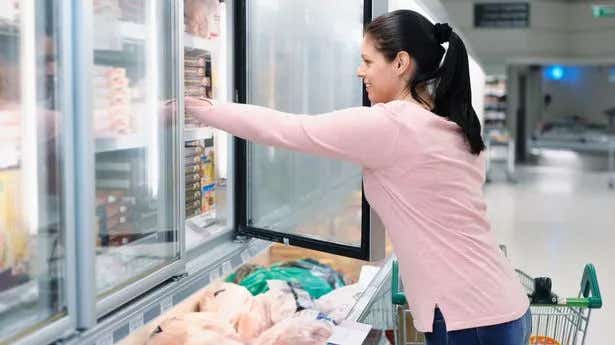Simple food swaps could cut greenhouse gas emissions from groceries by more than 70%
This analysis represents the most detailed investigation into the environmental impact of a country’s food purchasing behavior

Switching everyday food and drink purchases to more environmentally friendly alternatives could cut greenhouse gas emissions from household groceries by more than a quarter (26%), according to a new study by The George Institute for Global Health and Imperial College London.
Published in Nature Food, this research suggests that even more significant changes, like swapping a frozen meat lasagne for a vegetarian one, could boost this reduction to 71%.
For consumers to make informed choices, the study emphasizes the need for on-pack labeling of greenhouse gas emissions for all packaged food products. This analysis represents the most detailed investigation into the environmental impact of a country's food purchasing behavior, incorporating extensive data on greenhouse gas emissions and sales for tens of thousands of supermarket products typical of Western diets globally.
Dr. Allison Gaines, the lead author and an epidemiologist at The George Institute and Imperial College London, stated, “Dietary habits need to change significantly if we are to meet global emissions targets, particularly in high-income countries like Australia, the UK, and the US. Consumers are increasingly aware of the environmental impact of the food system and are willing to make more sustainable choices, but they lack reliable information to identify the more environmentally friendly options.”
Researchers projected the emissions of annual grocery purchases from 7,000 Australian households using data on ingredients, weights, and production life cycles from The George Institute’s FoodSwitch database and global environmental impact datasets.
Over 22,000 products were categorized into major, minor, and sub-categories of foods (e.g., ‘bread and bakery,’ ‘bread,’ and ‘white bread’) to quantify emissions saved by switching both within and between groups.
Related Stories
Switching within the same sub-categories of foods could reduce emissions by 26% in Australia, equivalent to taking over 1.9 million cars off the road. More substantial switches within minor categories of foods could lead to an even more significant reduction of 71%.
“The results of our study show the potential to significantly reduce our environmental impact by switching like-for-like products. This is something consumers in the UK could, and probably would, do if we provided emissions information on product labels," said Dr. Gaines.
Dr. Gaines added that these switches would not compromise overall food healthiness: “You can switch to lower emissions products while still enjoying nutritious foods. In fact, we found it would lead to a slight reduction in the proportion of ultra-processed foods purchased, which is a positive outcome because they’re generally less healthy.”
The analysis also revealed that meat products contributed nearly half (49%) of all greenhouse gas emissions but only 11% of total purchases. On the other hand, fruit, vegetables, nuts, and legumes made up a quarter (25%) of all purchases but were responsible for just 5% of emissions.
Globally, the food and agriculture sector is responsible for about one-third of greenhouse gas emissions. The combined health and environmental costs of the global food system are estimated to be between 10-14 trillion USD (8-11 trillion GBP) per year. Transitioning to healthy, low-emission diets could prevent more than 12 million deaths annually.
Prof. Bruce Neal, Executive Director at The George Institute Australia and Professor of Clinical Epidemiology at Imperial College London, noted that as a global community, we are delaying necessary improvements to the sustainability of the food system, threatening the prospect of a net-zero future.
“There is currently no standardized framework for regulating the climate or planetary health parameters of our food supply, and voluntary measures have not been widely adopted by most countries. This research shows how innovative approaches could enable consumers to make a real impact,” he said.
To help consumers make environmentally friendly choices, The George Institute has developed a free app called ecoSwitch, currently available in Australia. Shoppers can use their devices to scan a product barcode and check its ‘Planetary Health Rating,’ which measures emissions on a scale from half a star (high emissions) to five stars (low emissions).
The George Institute plans to expand the ecoSwitch algorithm to include other environmental indicators such as land and water use and biodiversity. The goal is to introduce this tool to other countries and eventually implement a mandatory, standardized sustainability rating system on all supermarket products.
Prof. Neal concluded, “While ecoSwitch is a much-needed first step in providing environmental transparency for grocery shoppers, the vision is for mandatory display of a single, standardized sustainability rating system on all supermarket products.”
For more science and technology stories check out our New Discoveries section at The Brighter Side of News.
Note: Materials provided above by The Brighter Side of News. Content may be edited for style and length.
Like these kind of feel good stories? Get the Brighter Side of News' newsletter.
Joshua Shavit
Science & Technology Writer | AI and Robotics Reporter
Joshua Shavit is a Los Angeles-based science and technology writer with a passion for exploring the breakthroughs shaping the future. As a contributor to The Brighter Side of News, he focuses on positive and transformative advancements in AI, technology, physics, engineering, robotics and space science. Joshua is currently working towards a Bachelor of Science in Business Administration at the University of California, Berkeley. He combines his academic background with a talent for storytelling, making complex scientific discoveries engaging and accessible. His work highlights the innovators behind the ideas, bringing readers closer to the people driving progress.



